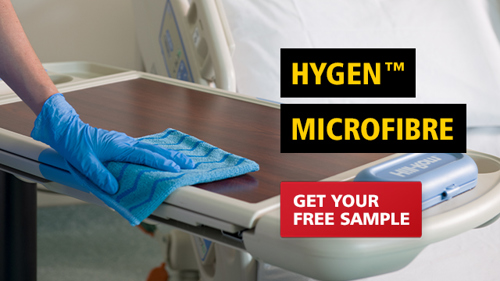
Rubbermaid microfibre cloths, like many products from the Rubbermaid cleaning range, are available in various forms. Some cloths are reusable and can be laundered time and time again. If handled with care, these cloths can last up to two years in commercial settings. On the other hand, disposable microfibre cloths are single-use and must be disposed of after each task.
Though these cloths both serve the same purpose, it's vital to know when to use disposable cloths and when to use reusable microfibre. This can help your business maintain an infection-free environment at all times. But, it can also help you cut down on costs and ensure you are reducing your carbon footprint to as low as possible.
The following blog, therefore, will analyse the use cases of the Rubbermaid microfibre cloths to help you understand which is best for your business setting.
Consider the type of waste you will clean with Rubbermaid microfibre
Every business will require Rubbermaid microfibre cloths for different purposes. So, it’s important to consider what type of surfaces these cloths will be cleaning and the infection prevention level. For example, a retail business would likely be cleaning their counters and door handles to ensure infection prevention for staff and patrons’ safety. On the other hand, a hospital would need to consider more extreme infection prevention needs. Across their organisation, many cloths will be used to sanitise surfaces where unwell patients have been in contact with, where highly infectious bacteria from sick patients may have been left behind.
Though the Rubbermaid microfibre range is all designed to trap pathogens, choosing the right cloth based on the business setting can reduce the risk of spreading harmful infection across the premises. Therefore, those businesses handling more infectious surfaces, such as hospitals with bathrooms, will promote better infection control by using disposable microfibre. Whereas businesses that are using microfibre cloths as a preventative measure to ensure a higher level of clean is acheieved, such as a retail business, can typically benefit from reusable microfibre.
Consider the environmental impact of your Rubbermaid microfibre
When viewing Rubbermaid Hygen products, many will immediately assume that disposable microfibre has the largest environmental impact. Though, the impact of each microfibre cloth depends on the business structure. As an example, an education business, such as a high school, may choose reusable microfibre cloths. However, if they don’t have washing facilities on site, they will need to allocate a staff member to send these cloths to a laundering service up to five times a week. If they aren’t filling the washing machine when washing these cloths, this can contribute to litres of water wastage. This is particularly detrimental in the summer when droughts are more common. On top of this, the carbon emissions of each drive to and from the premises must also be considered.
This doesn’t mean that all businesses without access to washing machines should only use disposable microfibre. Though, it may indicate, that business owners should consider using a combination of Rubbermaid disposable microfibre and reusable microfibre.
Consider the cost of your Rubbermaid commercial microfibre products
Disposable microfibre and reusable microfibre both work to help businesses achieve a higher level of cleanliness. Though some may consider reusable microfibre more effective, the entire Rubbermaid Australia range utilises the highest level of innovation to create an infection-free environment. So, when considering if disposable or reusable solutions are better, these products cannot be compared based on their cleaning ability.
Like considering context and environmental factors, business owners must regard the cost to their business. For example, disposable cleaning cloths come at a lower price. However, they constantly need to be purchased to keep up with business demand. On the other hand, reusable cleaning cloths have a more expensive price, but the costs can be spread over two years due to their long lifetime.
Considering their commercial cleaning needs and costs can help these business owners make informed decisions about what will be best for their company. As an additional note, businesses that opt for disposable microfibre should train their staff on proper usage. This can prevent these disposable microfibre cloths from going to waste, which can inflict high costs on owners.
Business owners and managers can also access various training programs online through the Rubbermaid training portal. They should also consider yearly refresher training to ensure each staff member is well-informed on how to clean effectively. This will improve infection control protocols across the business but, as mentioned, will also lower costs in wasted materials.
Rubbermaid Commercial supplies the highest quality microfibre cloths
At Rubbermaid Commercial, we understand that cleanliness and good infection control can significantly improve your business. For this reason, we have manufactured a range of cleaning tools that can suit all industry environments.
Therefore, the quality of our disposable and reusable microfibre cloths is unmatched. Rather than comparing their cleaning ability, business owners must consider each use case to determine which cloth is better suited to their premises. This will allow them to achieve a high level of cleanliness while minimising costs and environmental impacts.
If you are interested in our microfibre range but are unsure which products are best for your business, you can contact the team at any time. We would be happy to provide some insight into what will work best for you.